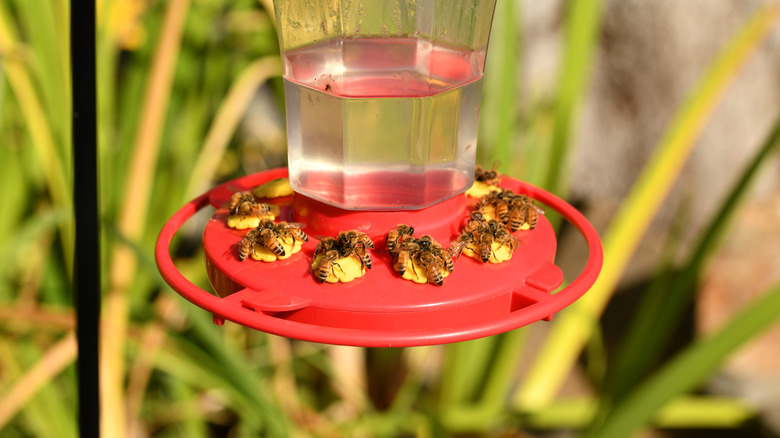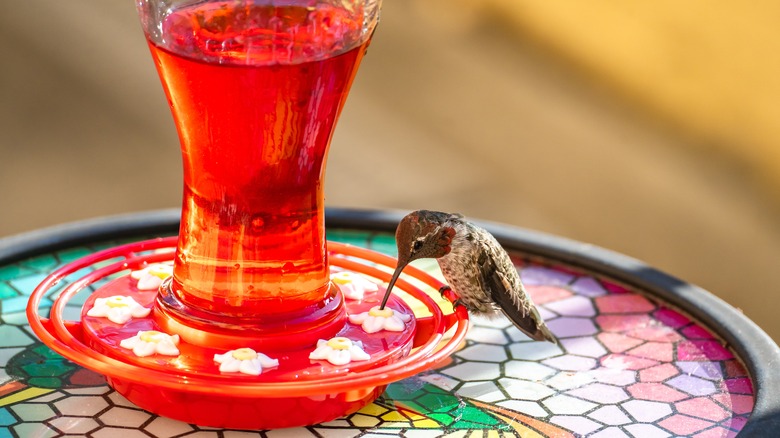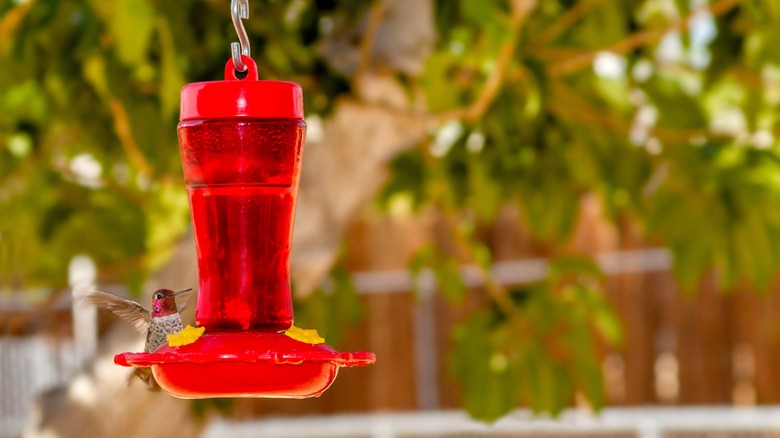The Best Way To Keep Bees Away From Your Hummingbird Feeder
Hummingbird feeders are the perfect way to bring these colorful, stunning birds to your yard. Unfortunately, these feeders full of sweet nectar oftentimes garner other uninvited guests looking for a sugar fix of their own. Similar to hummingbirds, bees are drawn to sweet substances, so they're often found mooching off the nectar in hummingbird feeders. Using a red feeder, installing nectar guards, and finding a shaded spot are crucial steps in combatting a bee takeover, which, if not handled quickly, can become both a major problem and a potential hazard in your yard.
If bees are obtaining sugar and energy through hummingbird feeders, they're likely spending a lot less time foraging through the flowers in your garden for nectar. In other words, they're not only taking food from the hummingbirds, but they won't be pollinating your plants. By picking the right type and color of feeder and placing it in the perfect spot, you'll be able to reclaim your hummingbird feeder in no time.
The right feeder
If you already have a hummingbird feeder that's been taken over by bees and other pesky insects, you may want to bring it inside and consider its design. There are multiple different physical attributes of each feeder that will either welcome or deter bees from stopping by for a free meal.
First, note the color of your feeder. Red attracts hummingbirds, while yellow tends to garner bees. Be sure to use a red-dominant feeder and avoid yellow as much as possible. Nectar guards are also extremely important physical details that do a great job of deterring bees. These add-ons (some feeders come with them already attached) make the hole too small for bees to feed out of but just large enough for hummingbirds to use. Again, make sure that these aren't yellow.
If you've been using the same hummingbird feeder for a while, you may want to check for leakage. Holes releasing excess nectar could result in more bee activity and may be a sign that it's time for a new feeder.
Rehoming your feeder
As mentioned earlier, if bees find a more convenient way to satisfy their sweet tooth, they will opt for that rather than flower foraging. To prevent this, keep your hummingbird feeder as far from flowers as possible. That way, the bees in the flower bed will stay put, continue to work within the garden, and avoid the temptation of an easy meal.
Another important thing to note when picking the perfect home for your hummingbird feeder is how much sunlight it receives. Ideally, you'll want to place it in a mostly shaded area. Shortly after rehoming your hummingbird feeder, you'll notice that it not only has more serviceability for its customers but also stays clean and full for much longer. This is because feeders in the shade avoid premature nectar fermentation and spoilage and are much less appealing to bees, who tend to stay in sunlight throughout the day.


